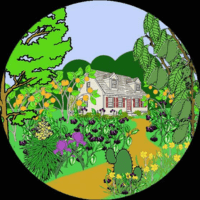Valerian - an ancient medicinal herb
Valerian was used as a medicinal herb in ancient Greece and Rome. It’s also used as flavoring in food products and to make perfumes. And, cut flowers provide a wonderful floral fragrance!
However, Valerian is known as a sleep aid. Tea and roots are used to treat anxiety, restlessness and insomnia. But it’s not for everyone (we’re ad-free & no BS).
HEPPY™ grows Valerian, Valeriana officinalis. It’s the well known variety. However, DON’T confuse it with another “Valerian,” Valeriana edulis. The two have the same name but are very different (and look different).
This ad-free plant guide provides YOU with everything we’ve learned growing, using it, and researching it 😉
On this webpage:
1. Plant Fact Sheet.
2. Valerian in landscaping and urban gardens.
3. Valerian’s medicinal qualities.
4. Commercial viability.
5. Care and Maintenance: growing, pruning and harvesting Valerian.
7. Propagating Valerian.
8. Valerian we grow organically at HEPPY™!
________________________________________
see our list of 400 edible plants
YouTube channel (please subscribe)
Valerian in garden design, permaculture, and organic gardening
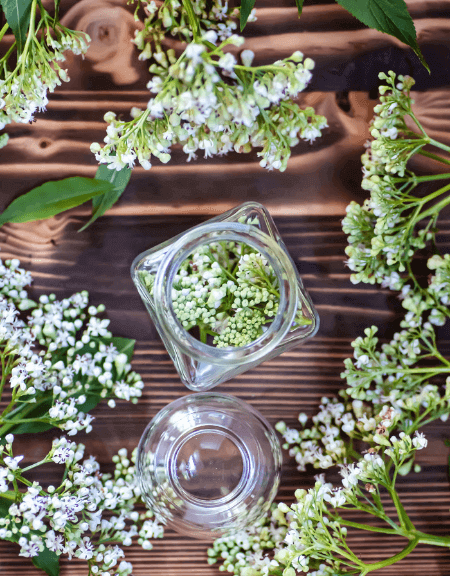
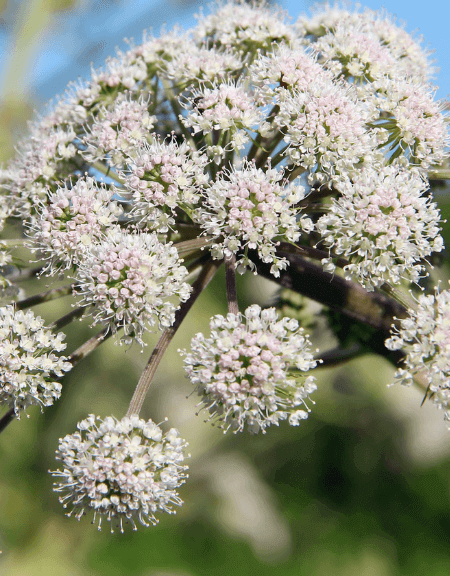
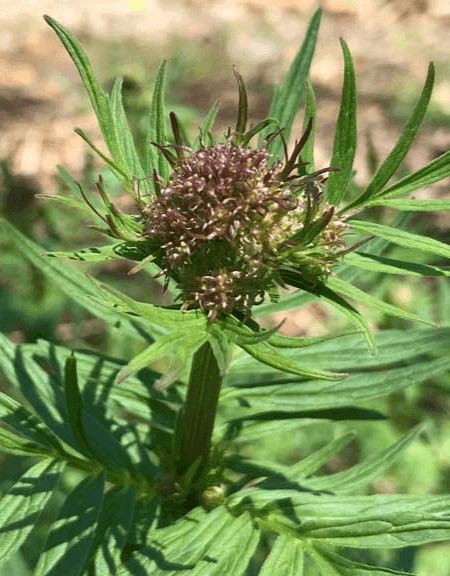
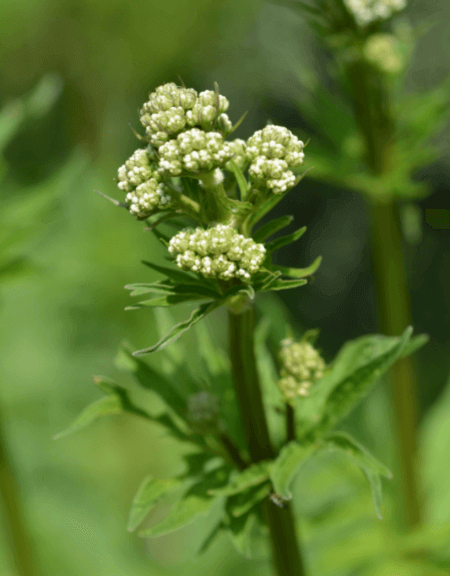
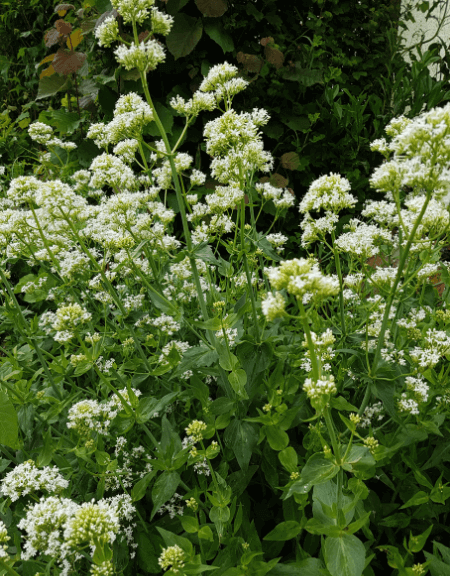
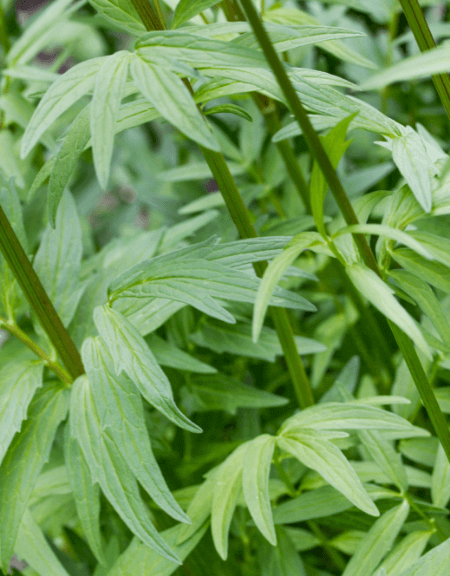

Valerian, Valeriana officinalis
common names: Garden Heliotrope, Garden Valerian, Setwall, All-heal
Fact Sheet
Zone: 4 to 8
Height: 3 to 5 feet (INCLUDING its long flowering stem; otherwise, its foliage is less than 12 inches)
Native: Europe and Western Asia
Bloom Time: May – July (region dependent)
Bloom Color: White to pale pink
Fruit Maturity: Fall¹
Self-fertile: yes (hermaphrodite)
Sun: full sun (full sun for healthiest plant, such as growing erect flowering stems)
Water: medium (prefers moist soil)
Soil: forgiving (wide range but prefers high-organic)
Maintenance: low
Growth Rate: modest
Deciduous or evergreen: deciduous
Edible¹: roots, leaves and seeds (more information is below)
Medicinal²: yes (discussed below)
Commercial viability: strong (discussed below)
Family / Genus: Caprifoliaceae / Valeriana
Remarks: disease and pest resistant; fragrant blooms; attractive foliage and bloom; a long history of medicinal use; a wide array of uses which makes it commercially viable
Valerian in landscaping and garden ideas
Valerian grows well at HEPPY™. it’s not native to North America but is well adapted.
HOWEVER, it is listed as invasive in Connecticut. it may be banned (click on the tab, Legal Status, once you land on this USDA website). it grows far more vigorously in northern parts of the US. please be aware of your location relative to what’s been reported at Invasive Plants Atlas.
Valerian is definitely NOT invasive here at HEPPY, Zone 7 (at low-low elevation and it’s yucky hot/humid in the summer). here, it grows modestly.
Landscape Architecture
in landscape architecture, Valerian is a wonderful addition to a ornamental garden. its foliage is attractive, and it’s large cluster of white flowers stand high (3’+) off a strong stalk. it’s surging stalk will place its pronounced head of blooms above many types of ornamental flowers.
Garden Ideas
Valerian fits as a border plant and against fencing. its beautiful foliage and flowers will accentuate a background. or, mix the plant into a larger ornamental garden. its foliage is open (not compact) so it will blend-in with other ornamentals. it does NOT overpower its neighbors. our plants bloom white. however, some varieties bloom pale white. the blooms’ fragrance is sweet and mild.
the Valerian is self-pollinating and will self-seed (I read). however, I see no evidence of self-seeding at HEPPY. it spreads modestly by its very benign root system. cooler temperatures may stimulate more rapid grows (by seed or otherwise). HEPPY’s modest clusters — 3 to 4 feet in diameter — spread from one very small plant we purchased in 2016.
How Valerian is used medicinally
1, 2 HEPPY cannot take any responsibility for any adverse effects from the use of plants. Always seek advice from a professional before using a plant for food or medicinally. This information is intended for educational purposes only and should not be considered as a recommendation or an endorsement of any particular medical or health treatment.
Edible roots
however, the medicinal herb is not perfect. multiple sites write that Valerian should NOT be mixed with other sedatives. also, it may be addictive, and should be avoided by pregnant women and children under 3 years old.
what’s not always clear are the dosages. and, are the warnings applicable to, what I call, Grandma’s Concoctions? does a tea or a nibble of fresh root have negative effects?
it is a surprisingly complex plant, according to the NIH. “Many chemical constituents of Valerian have been identified, but it is not known which may be responsible for its sleep-promoting effects…it is likely that there is no single active compound and that Valerian’s effects result from multiple constituents acting independently or synergistically.”
ultimately, Valerian has a long history in many cultures. in conclusion, the ancient medicinal herb has positive effects — whether it acts independently or synergistically.
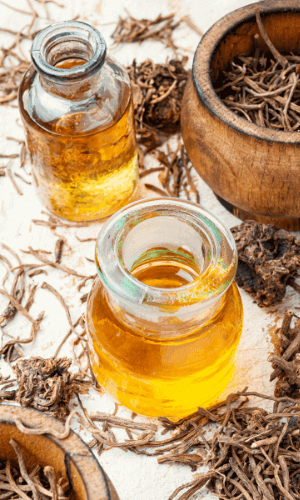
Medicinal Plants and Herbs — Valerian's medicinal qualities
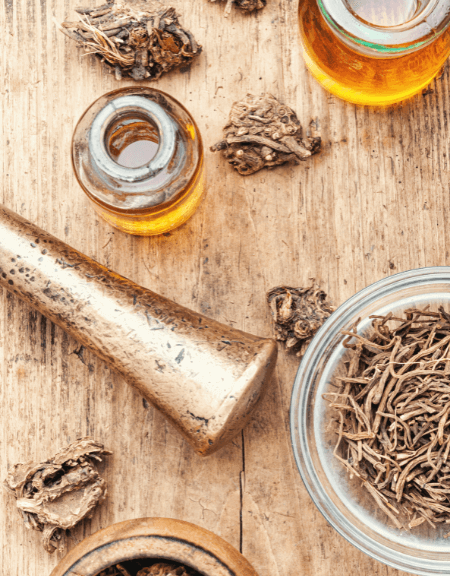
medicinally, Valerian was used as a medicinal herb dating back to ancient Greece and Rome. it has been used to treat nervousness, trembling, headaches, and heart palpitations; and in other cases.
however, Valerian was considered a stimulant that caused some of the same complaints it is thought to treat. Confused yet?
during World War II, it was used in England to relieve the stress of air raids. use Valerian with caution — it affects people differently.
this medicinal herb falls into the same category as SO many wonderful plants with bioactive compounds. frequently, NIH research and NIH publications (PubMed) conclude by stating something like, ‘we’re not sure how it works … further research is warranted to develop new drugs.’ no da. it seems unfulfilling and disappointing to read that the NIH and drug companies have not leveraged “low hanging fruit” such as medicinal plants used for a millenia.
Commercial viability
the commercial viability is strong. sell the plant, or any part of it. where to start!?
Farmers' market or cottage food industry
“Extracts have also been used in perfumes, herbal teas and for flavoring in a variety of food products.” the key is knowing the rules and regulations that allow the sale of Valeriana officinalis in these forms.
the entire plant can be used as a product. products for a farmer’s market include leaves for teas. flowers or roots for tinctures, extracts and oils.
it flowers are very fragrant. mild and sweet but deep in floral scent. much like a carnation — subtle but a pronounced pleasant smell.
There’s a lot to explore and we invite interns and volunteers to focus on the commercial viability of the Red and Texas Mulberries here at HEPPY.
Commercial or private landscaping
it is an attractive plant. it’s easy to maintain in plant zone 7. it fits into a many backyard and front yard landscaping and garden designs.
she is low maintenance here in Maryland, zone 7. however, it’s likely to grow more vigorously in cooler climates. be cautious. Valerian is considered a “Midwest Noxious Weed” and should NOT be planted in some areas.

Guide to Care and Maintenance:
growing, pruning and harvesting Valerian
Growing
we grow our plants in rich, well drained soil. however, it grows…sorta slow. HEPPY™ is in Maryland, zone 7. i suspect that it’s too warm. we’ve tried a shady spot (3/4 shade), and a sunnier spot (1/2 day). she wilts during the day in the 1/2 day-sun location, and grows very slow.
from what i’ve read, the plant grows best in cooler temps. and it likely needs more moisture than we’re providing.
Pruning / thinning
we prune flower heads off for our use. it ALSO reduces the risk of it self-seeding beyond our property.
thinning is performed by digging up young plants spreading from the parent plant. we’ve not had to do this because the plant grows so slow. on the other hand, if your Valerian is spreading quickly, it’s a risk of being an invasive. take caution.
Harvesting
harvest Valerian root after the plant blooms. that’s mid-June in Maryland, zone 7.
the roots are easy to identify. check out our YouTube video on the left.
i chewed on juicy leaf stems while filming our first video. however, i felt no effect.
we will be exploring what the roots can do; enjoy the tea at some time in the future, for sure!
Propagating Valerian:
cuttings, division, grafting, layering and seeding
we made a fun video while transplanting. our patch of Valerian propagated naturally through it’s roots spreading underground (“rhizomes”). check out our vid where we thin our patch and transplant several root-clusters to a new location.
we have not collected seeds. but I see that it’s large heads of flowers would produce plenty of seeds. the plant self-seeds in cooler climates. “top” the blooms and use them as cut flowers if self-seeding is an issue!
volunteer at, or donate to HEPPY to move this project along!
Valerian growing at HEPPY™
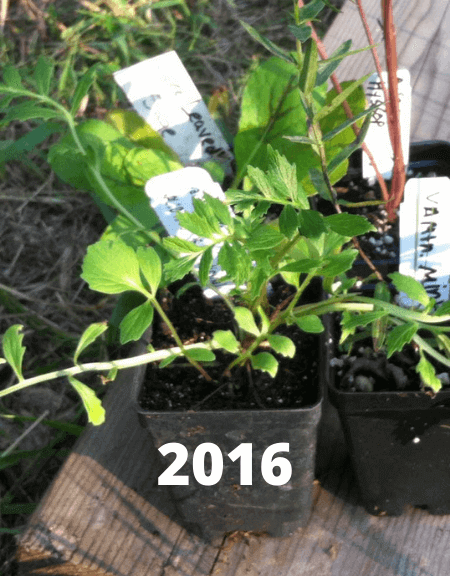

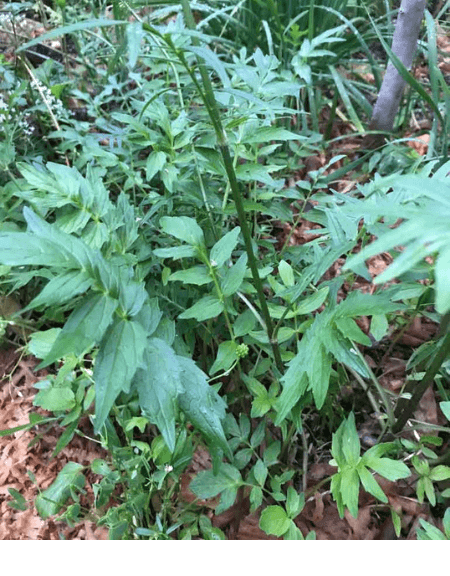

our HEPPY™ Valerian was purchased in 2016 at the Ohio Pawpaw Festival. the supplier was Natives in Harmony.
it took three years for ONE little plant — in a 2 inch pot (pic on the left) — to grow into a 3 foot wide patch. it’s a well behaved patch. the gentle root system has spread very slowly.
in Spring 2019 we transplanted root clusters to a new area. the goal was to have it grow faster!! it still grows very slowly. we’re excited about exploring what Valerian can do! however, we have to improve our growing skill for this plant 😉
volunteer at HEPPY or donate to move this project along!
